
Waist Trainer for Women
- Fashion Evolution
- Instant Slimming Effect
- Functional Design
- Improved Posture
- Customization Options
- Motivation for Weight Loss
Waist trainer gained amazing popularity in past few years, as a tool for slimming and shaping the waistline. These garments are designed to compress the midsection, creating a sleeker and more defined appearance. While waist trainers have been around for centuries in various forms, they have experienced a resurgence in modern times thanks to celebrity endorsements and social media influencers.[Home] – [Previous Post]
What is a Waist Trainer?
A waist trainer is a type of garment that is worn tightly around the waist to cinch and shape the midsection. It is typically made from materials like latex, spandex, or neoprene, which provide firm compression. The design of a waist trainer varies, but most feature boning or flexible rods to help maintain the garment’s shape and provide additional support.
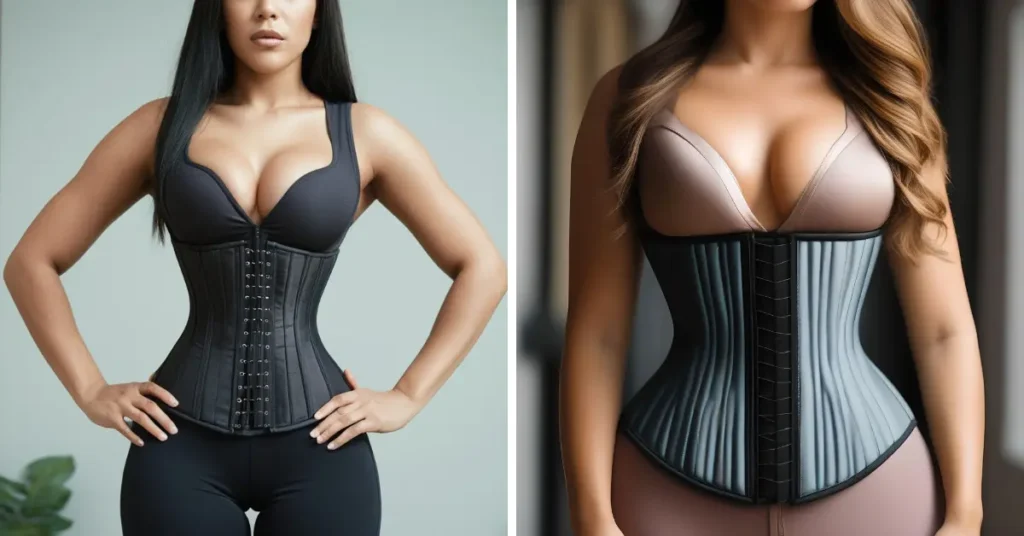
| Type of Waist Trainer | Description |
| Corsets | Traditional garments with rigid boning, usually made from materials like steel, and lace-up closure for adjustable fit. |
| Waist Cinchers | Shorter in length than corsets, made from elastic materials like latex or spandex, providing firm compression. |
| Waist Trimming Belts | Often made from neoprene, featuring adjustable straps for a snug fit around the waist, and may include back support. |
Benefits of Using Waist Trainers
| Benefits | Description |
| Instant Slimming Effect | Creates the appearance of a smaller waistline immediately upon wearing. |
| Improved Posture | Firm compression may support the back and encourage better posture. |
| Motivation for Weight Loss | Some users find that wearing a waist trainer motivates them to adopt healthier habits, aiding in weight loss efforts. |
Safety Considerations
| Safety Considerations | Description |
| Proper Fit | It’s essential to ensure the waist trainer fits correctly to avoid discomfort or breathing difficulties. |
| Limited Wear Time | Avoid wearing a waist trainer for extended periods, especially if you’re new to waist training, to prevent health issues. |
| Listen to Your Body | Pay attention to any discomfort or adverse effects while wearing a waist trainer and remove it if necessary. |
Where to buy body shaper for women?
Amazon: One of the largest online retailers offering a wide variety of waist trainers from various brands and sellers.
Refersion Marketplace: An online platform where you can find curated collections of waist trainers from trusted and verified sellers.
Our Score

Available

Available
What size waist trainer should I buy?
To choose the accurate waist trainer size, first of all measure your waistline and refer to the sizing chart provided by the manufacturer or online seller. It’s crucial to select a size that fits snugly but not too tightly to avoid discomfort and breathing difficulties.
Some Important Information about Waist Trainer
- Waist cinchers made from whalebone were popular among European women in the 16th century.
- Corsets became fashionable in the 1820s, shaping the waistline into an hourglass figure.
- The steel busk, a front closure for corsets, was patented in the 1850s, making corsets easier to put on and take off.
- The word “waistline” entered the English language in 1908, reflecting the importance of a defined waist in fashion.
- The popularity of waist cinchers declined in the 1950s as more relaxed silhouettes came into fashion.
- Waist trainers experienced a resurgence in popularity in the 1990s with the rise of lingerie as outerwear fashion trends.
- In the 2010s, social media influencers and celebrities popularized waist trainers as a tool for achieving an hourglass figure.
How Does a Waist Trainer Work?

The primary function of a waist trainer is to compress the waistline, which can create the appearance of a smaller waist and accentuate curves. When worn regularly, waist trainers are believed to help train the waist to maintain a slimmer shape over time. Some proponents also claim that waist trainers can assist with weight loss by increasing perspiration around the midsection, although these claims are not supported by scientific evidence.
History of waist trainer
| Year | Event |
| 16th century | Waist cinchers made from whalebone were popular among European women. |
| 1820s | Corsets became fashionable, shaping the waistline into an hourglass figure. |
| 1850s | The steel busk, a front closure for corsets, was patented, making corsets easier to put on and take off. |
| 1908 | The word “waistline” entered the English language, reflecting the importance of a defined waist in fashion. |
| 1950s | The popularity of waist cinchers declined as more relaxed silhouettes came into fashion. |
| 1990s | Waist trainers experienced a resurgence in popularity with the rise of lingerie as outerwear fashion trends. |
| 2010s | Social media influencers and celebrities popularized waist trainers as a tool for achieving an hourglass figure. |
Are waist trainers safe to use?
Yes, waist trainers can be safe to use if worn properly and for appropriate durations. It’s essential to choose the right size and fit for your body to avoid discomfort or health risks. Wearing a waist trainer for extended periods or too tightly can lead to breathing difficulties and other complications. It’s crucial to listen to your body and take breaks when needed. Consulting with a healthcare professional before starting waist training is also recommended to ensure it’s safe for your individual health.
Effectiveness for Weight Loss

Waist trainers can potentially aid in weight loss efforts, but they are not a guaranteed solution on their own. Wearing a waist trainer can promote sweating around the midsection, which may lead to temporary water weight loss. Additionally, some users find that wearing a waist trainer can act as a reminder to maintain healthy eating habits and engage in regular exercise. However, it’s essential to understand that waist trainers alone are not sufficient for significant or long-term weight loss. Healthy lifestyle choices, including balanced nutrition and consistent physical activity, are key components of sustainable weight loss.
Types of Waist Trainers
There are several types of waist trainers available on the market to suit different preferences and body types. The most common types include corsets, waist cinchers, and waist trimming belts. Corsets are traditional garments with rigid boning, often made from materials like steel or whalebone, and feature a lace-up closure for adjustable fit. Waist cinchers are shorter in length than corsets and are made from elastic materials like latex or spandex, providing firm compression. Waist trimming belts are typically made from neoprene and feature adjustable straps for a snug fit around the waist, with some designs including back support.

Available
Duration of Waist Trainer Wear
The duration of wearing a waist trainer each day depends on individual comfort and tolerance levels. It’s generally recommended to start with shorter periods, such as 1-2 hours per day, and gradually increase wear time as your body adjusts. If you are facing any issue like discomfort or difficulty in breathing, then Listen to your body and remove the waist trainer at once and take some long breath Avoid wearing a waist trainer for extended periods, especially if you’re new to waist training, to prevent potential health issues. Remember that consistency over time, rather than wearing it for long hours in one go, is key for effective waist training.
Choosing the Right Size
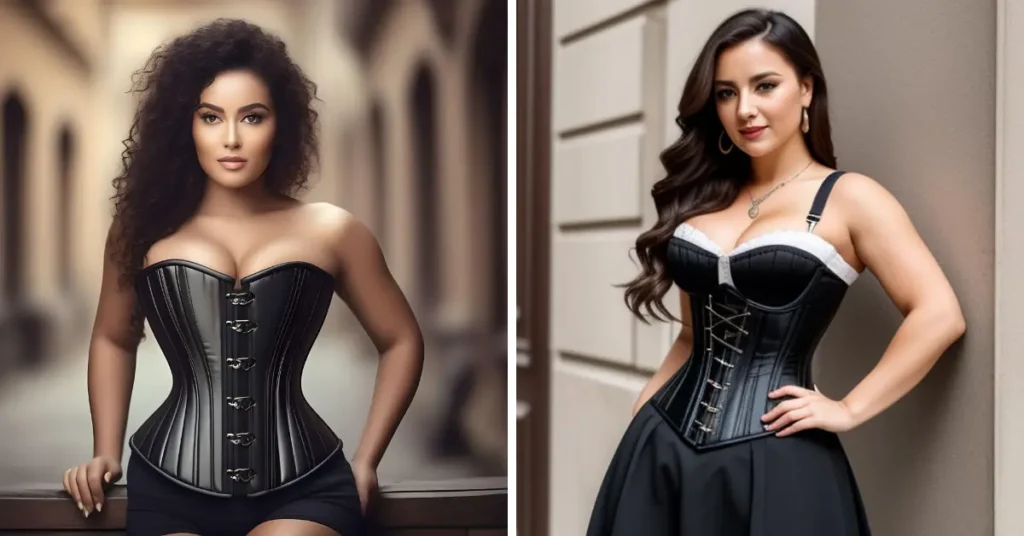
Choose the right size waist trainer is crucial for comfort and effectiveness. To determine the correct size, measure your natural waistline, typically located just above your belly button. Refer to the sizing chart provided by the manufacturer and select the size that corresponds to your measurements. It’s essential to follow the size guidelines accurately, as choosing a size too small can lead to discomfort and difficulty breathing, while a size too large may not provide adequate compression. If you are between sizes, for more comfortable fit opt for the larger size. Remember to consider your body shape and personal preferences when selecting a size.
Possible Side Effects of waist trainer
There can be side effects associated with wearing a waist trainer, especially if not used properly. Common side effects include discomfort, difficulty breathing, and skin irritation. Wearing a waist trainer that is too tight or for extended periods can lead to compression of organs, affecting digestion and circulation. Additionally, long-term use of waist trainers may weaken the core muscles and contribute to poor posture. It’s essential to listen to your body, take breaks when needed, and avoid wearing a waist trainer that causes discomfort or restricts breathing.
Cleaning and Maintenance of waist trainer
Cleaning and maintaining your waist trainer are essential for prolonging its lifespan and ensuring hygiene. Depending on the material, hand washing with mild soap and water is typically recommended. Gently scrub any areas with sweat or dirt buildup and rinse thoroughly. Avoid wringing or twisting the waist trainer, as this can damage the fabric and shape. Hang the waist trainer for completely air dry before storing it in a cool and dry place away from heat direct sunlight. Avoid machine washing or drying, as this can cause deformation or damage to the waist trainer. Regular cleaning and proper storage will help keep your waist trainer fresh and in good condition for longer.
Waist trainer Effect on Waist Size
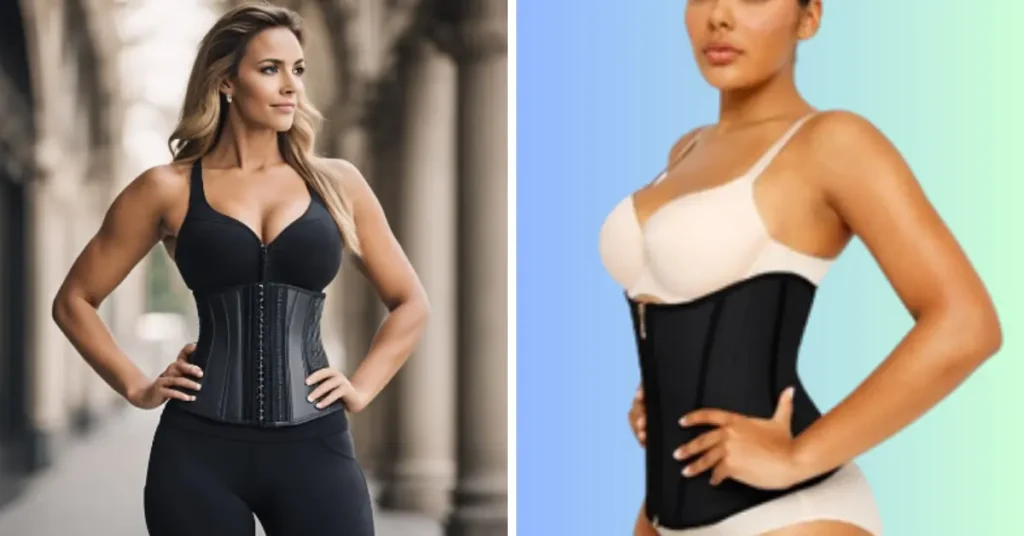
Waist trainers can create the appearance of a smaller waist immediately upon wearing, but their ability to permanently reduce waist size is limited. The compression from a waist trainer may temporarily redistribute fat and fluid, giving the illusion of a slimmer waistline. However, waist trainers alone cannot permanently alter body shape or reduce fat. To achieve lasting changes in waist size, a combination of regular exercise, healthy eating, and overall lifestyle modifications is necessary. While waist trainers can provide temporary results, they should be used as part of a comprehensive approach to waist management for best outcomes.
What exercises can I do while wearing a waist trainer?
While wearing a waist trainer, it’s essential to focus on exercises that engage the core and promote overall body strength and flexibility. Some suitable exercises include:
- Core exercises: Planks, crunches, and Russian twists help strengthen the abdominal muscles and improve core stability.
- Cardiovascular exercises: Activities like brisk walking, jogging, or cycling increase heart rate and calorie burn, contributing to overall weight loss.
- Resistance training: Using resistance bands or free weights can help build muscle tone and definition, enhancing the effects of waist training.
- Flexibility exercises: Yoga or stretching routines can improve flexibility and mobility, supporting better posture and overall body alignment.
Remember to listen to your body and avoid overexertion while exercising with a waist trainer. Always prioritize safety and proper form to prevent injury.

Available
Can men wear waist trainer?
Yes, men can wear waist trainers just like women. Waist trainers are not limited to a specific gender and can be worn by anyone seeking to shape their midsection or improve their posture. Men may use waist trainers to achieve a slimmer appearance, support their back during workouts, or enhance their confidence. When choosing a waist trainer, men should consider factors such as size, material, and comfort to ensure a proper fit and effective results. Like women, men should also use waist trainers responsibly and avoid wearing them excessively tight or for extended periods.
Selecting the Best Fit
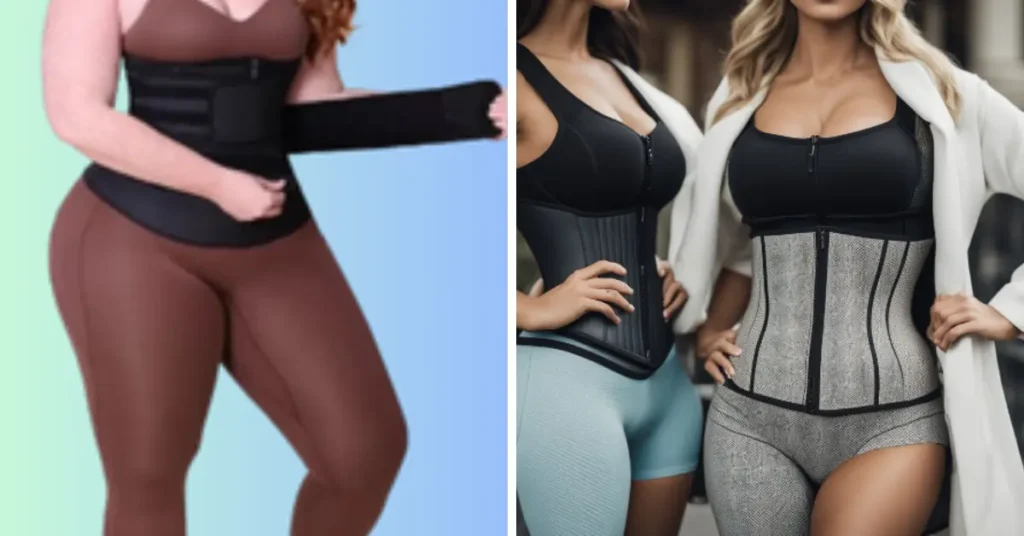
Choosing the best waist trainer for your body type involves considering several factors to ensure comfort and effectiveness. Firstly, determine your body shape and measurements to select the appropriate size. Next, consider the material and construction of the waist trainer, opting for breathable and flexible fabrics like latex or spandex for comfort during wear. Additionally, assess the level of compression provided by the waist trainer to match your desired level of support. Lastly, read reviews and consider recommendations from others with similar body types to find a waist trainer that suits your needs and preferences.
Medical Risks
Yes, there are potential medical risks associated with waist trainers if not used properly. Wearing a waist trainer that is too tight or for extended periods can lead to discomfort, difficulty breathing, and even organ compression. Prolonged use of waist trainers may weaken core muscles, contributing to poor posture and back pain. In some cases, wearing waist trainers too tightly may also affect digestion and circulation. It’s essential to listen to your body, avoid excessive wear, and consult with a healthcare professional if you experience any adverse effects while using a waist trainer.
Postpartum Recovery Support
Waist trainers may offer some benefits for postpartum recovery, but they are not a substitute for proper medical care and rehabilitation. After childbirth, the abdominal muscles and skin may be stretched, and wearing a waist trainer can provide support and compression to help the muscles regain their tone. Additionally, waist trainers can help women feel more supported and confident during the postpartum period. However, it’s crucial to consult with a healthcare provider before using a waist trainer after childbirth, as they can provide personalized advice and recommendations based on individual needs and circumstances.
Time to See Results
The time it takes to see results from wearing a waist trainer can vary depending on individual factors such as body composition, exercise routine, and dietary habits. Some people may notice immediate changes in their waistline, such as a more defined shape or slimmer appearance, upon wearing a waist trainer. However, for more significant and lasting results, consistent use of a waist trainer combined with a healthy lifestyle is key. It may take several weeks or even months of regular wear and dedication to see noticeable changes in waist size and body shape.
Are there any celebrities who endorse or wear waist trainer?
Yes, many celebrities have publicly endorsed or been spotted wearing waist trainer as part of their fitness routines or fashion choices. Some well-known celebrities who have endorsed waist trainer include Kim Kardashian, Khloe Kardashian, and Jessica Alba. These celebrities often share their experiences with waist training on social media platforms, highlighting the benefits they perceive, such as achieving an hourglass figure or enhancing confidence. While celebrity endorsements can raise awareness of waist trainer, it’s essential for individuals to research and consider their own needs and preferences before incorporating waist trainers into their routines.
Do waist trainer help improve posture?
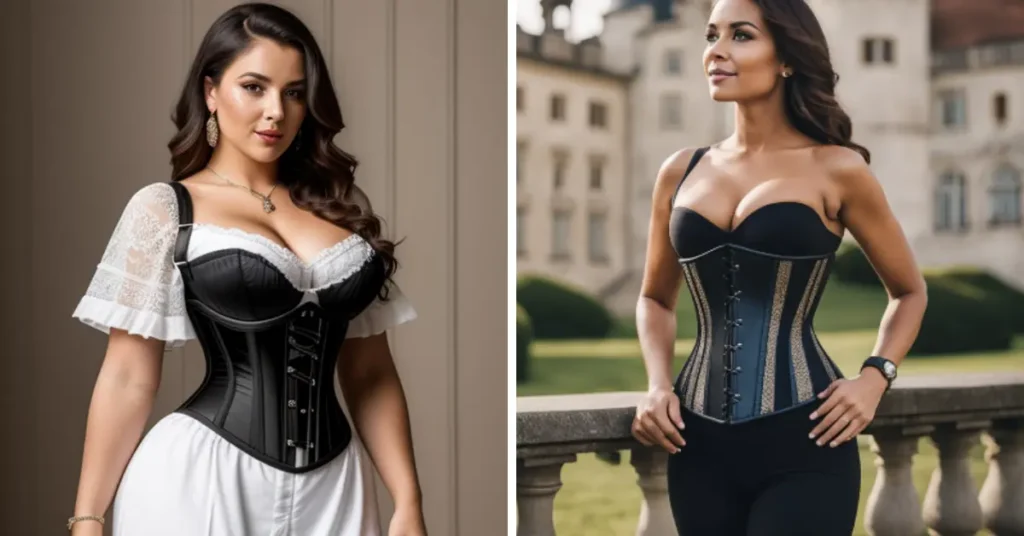
Yes, waist trainers can help improve posture by providing support to the lower back and abdomen. The compression from a waist trainer encourages the wearer to maintain a straighter spine and engage their core muscles, which can lead to better posture over time. Additionally, some waist trainers are designed with built-in support structures that promote proper alignment of the spine and shoulders. However, it’s essential to use waist trainers responsibly and avoid relying solely on them for improving posture. Incorporating exercises and stretches specifically targeting posture can further enhance the benefits of wearing a waist trainer.
Alternatives for Shaping
Yes, there are several alternatives to waist trainers for shaping the waistline. One alternative is waist-cinching garments like shaping underwear or compression tanks, which provide similar slimming effects without as much constriction. Additionally, strength training exercises that target the core muscles, such as planks, twists, and side bends, can help sculpt and define the waistline over time. Maintaining a healthy diet and engaging in regular cardiovascular exercise can also contribute to a slimmer waistline by reducing overall body fat. Ultimately, choosing the right method for shaping the waistline depends on individual preferences and lifestyle factors.
Can waist trainers be worn during exercise?
Yes, waist trainers can be worn during exercise to provide additional support to the core and promote sweating around the midsection. Some people find that wearing a waist trainer during workouts enhances their focus on engaging the abdominal muscles and maintaining proper form. However, it’s essential to choose a waist trainer specifically designed for exercise and ensure it allows for unrestricted movement. Additionally, if you feel any discomfort or feeling difficulty in breathing during exercise listen to your body and remove the waist trainer on urgent basis and then take some rest. Incorporating a balanced exercise routine that includes strength training, cardio, and flexibility exercises is essential for overall fitness and waistline management.
Frequently Asked Question About Waist Trainer
What is a waist trainer?
A waist trainer is a garment worn tightly around the waist to cinch and shape the midsection. It is designed to provide firm compression and create a slimmer appearance.
How do waist trainers work?
Waist trainers work by applying pressure to the waist area, which can help temporarily redistribute fat and fluid, giving the illusion of a smaller waistline. They also encourage better posture and provide support to the core muscles.
Are waist trainers safe to use?
Waist trainers can be safe to use when worn properly and for appropriate durations. However, wearing them too tightly or for extended periods can lead to discomfort, difficulty breathing, and even organ compression. It’s essential to use them responsibly and listen to your body.
Can waist trainers help with weight loss?
While waist trainers may promote sweating around the midsection, leading to temporary water weight loss, they are not a guaranteed solution for weight loss. Healthy eating habits and regular exercise are essential for long-term weight management.
How long should I wear a waist trainer each day?
The duration of wearing a waist trainer each day varies depending on individual comfort and tolerance levels. It’s generally recommended to start with shorter periods, such as 1-2 hours per day, and gradually increase wear time.
What size waist trainer should I buy?
To choose the right size waist trainer, measure your natural waistline and refer to the sizing chart provided by the manufacturer. It’s crucial to select a size that fits snugly but not too tightly to avoid discomfort and breathing difficulties.
Conclusion
Waist trainers have become a popular tool for shaping the waistline and achieving a slimmer appearance. While they can offer temporary benefits such as instant slimming and improved posture, it’s essential to approach their use with caution. Waist trainers should be worn responsibly and in moderation, as excessive use or wearing them too tightly can lead to discomfort, difficulty breathing, and potential health risks. It’s important to listen to your body and prioritize comfort and safety when using waist trainers.
Furthermore, waist trainers are not a substitute for healthy lifestyle habits such as balanced nutrition and regular exercise. While they may provide some support and motivation for weight loss, sustainable results are best achieved through a combination of healthy eating, physical activity, and overall wellness practices.
Overall, waist trainers can be a part of a comprehensive approach to waist management, but they should not be relied upon as the sole method for achieving a smaller waistline. By using waist trainers responsibly and in conjunction with other healthy habits, individuals can work towards their desired waist goals while prioritizing their health and well-being.
